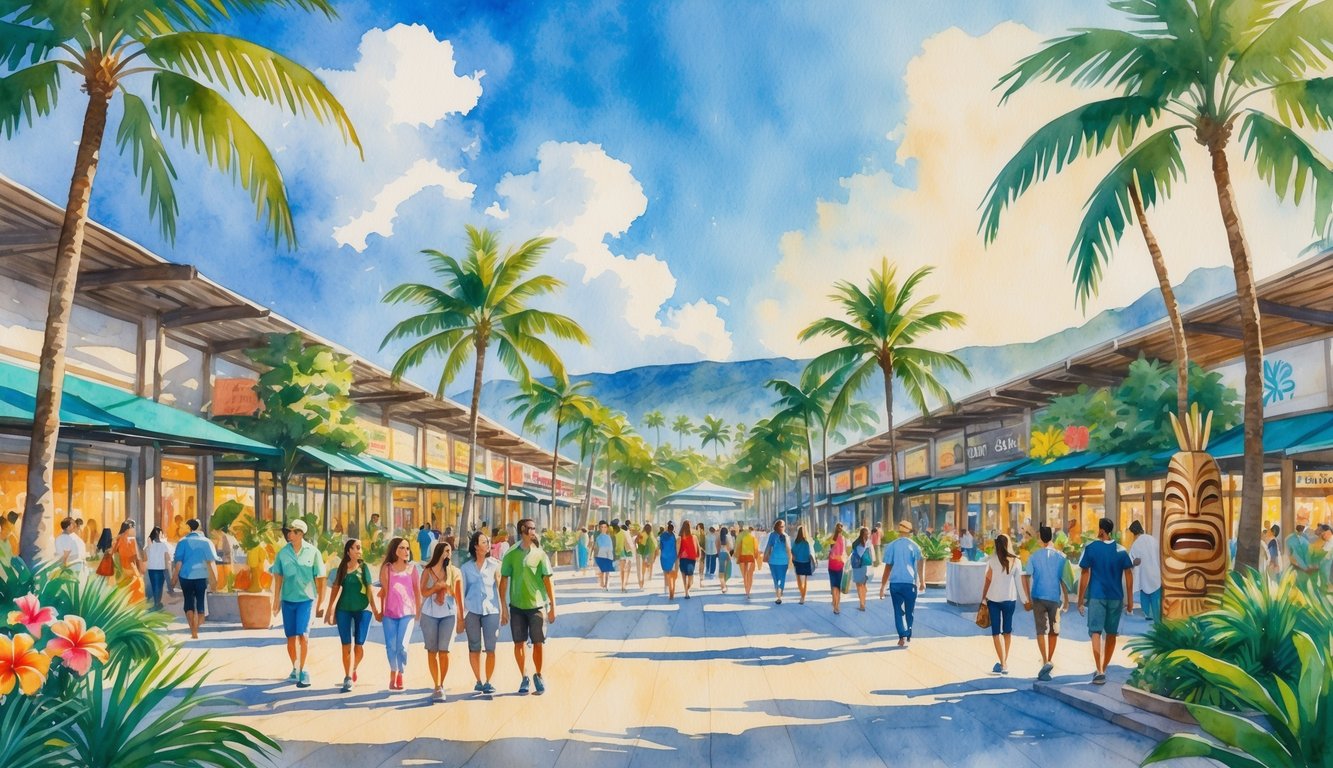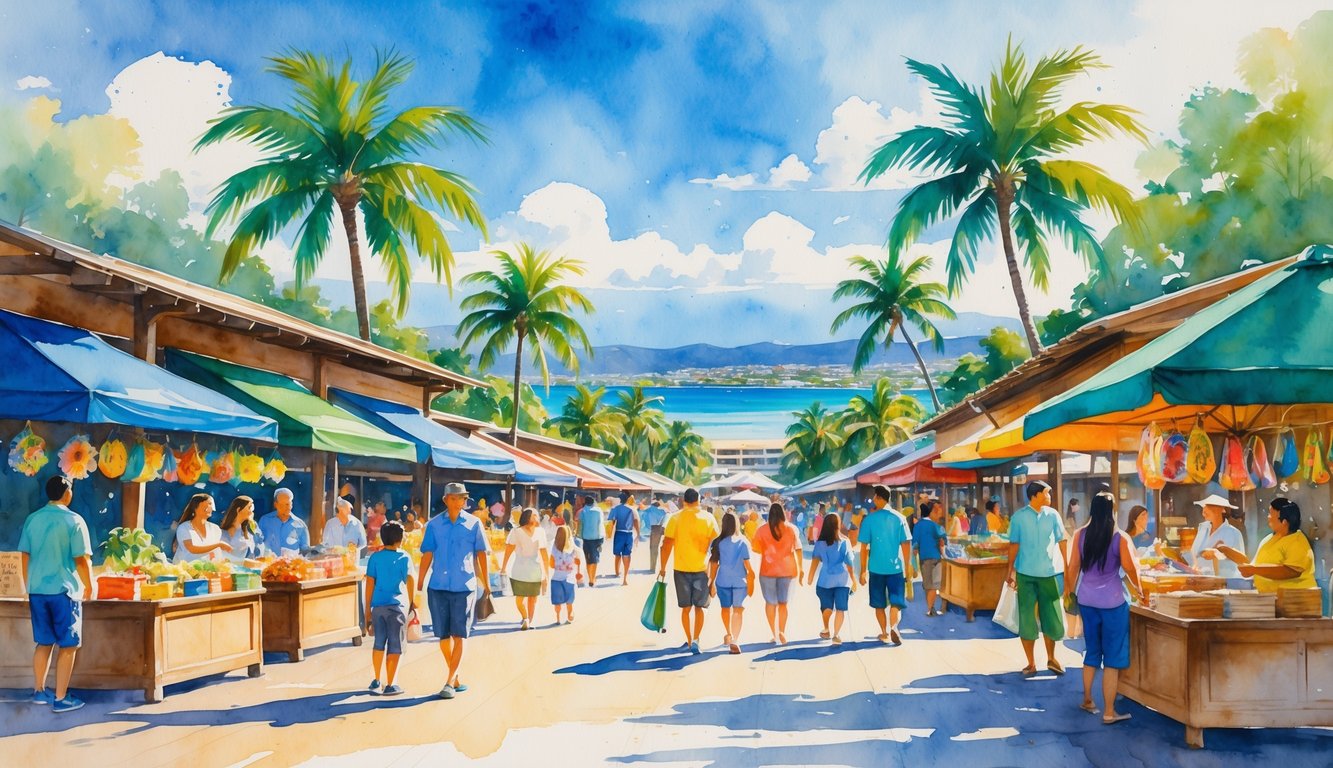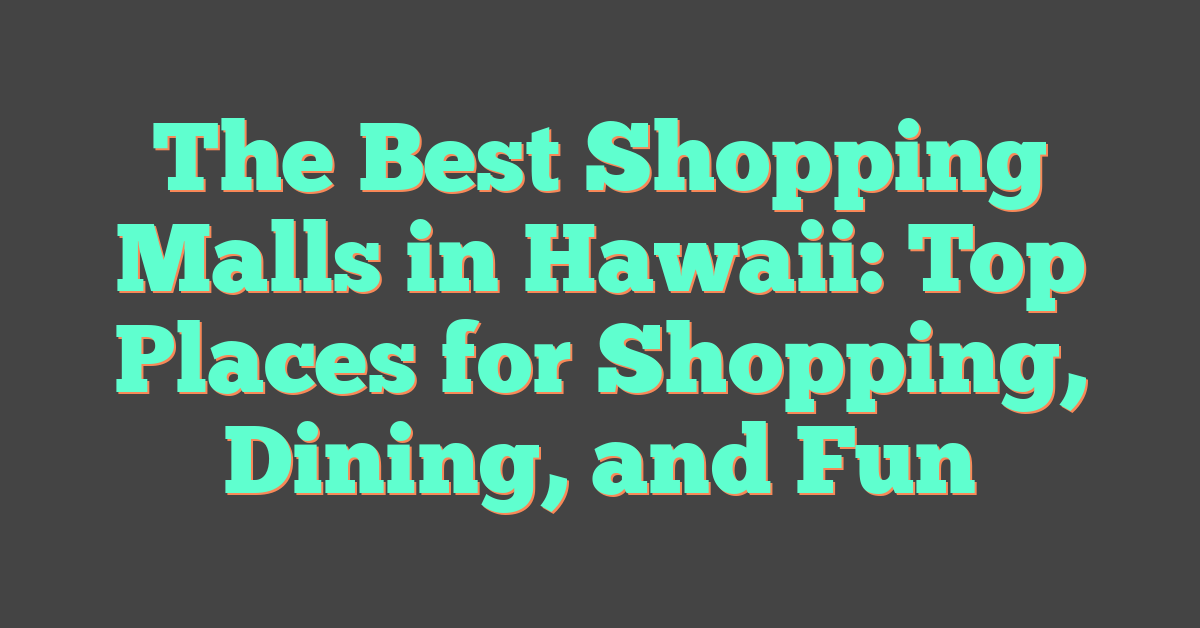Ala Moana Center is more than a place to shop—it reflects the heart of Honolulu’s culture and community. The center opened in 1959 and has grown into the world’s largest open-air shopping center while staying deeply connected to Hawaiian traditions.

It serves as both a retail destination and a cultural landmark, where modern life meets the heritage of the islands.

The Hawaiian name “Path to the Ocean” reflects Ala Moana Center’s connection to the land and its history. The center’s architecture and public spaces honor Hawaiian traditions.
Visitors can explore an impressive art collection featuring works from renowned artists. Events showcase hula, music, and other local traditions.
These features make Ala Moana Center a gathering place that celebrates Hawaii’s diversity and beauty. Locals and tourists connect here for shopping, dining, and community events.
Ala Moana Center supports the city’s social and economic life by blending commerce and culture. This unique mix keeps it at the heart of Honolulu’s story.
Ala Moana Center as a Cultural Landmark
Ala Moana Center in Honolulu brings together retail, entertainment, and Hawaiian heritage in one location. The center reflects the islands’ history, showcases local art, and serves as a gathering place for residents and visitors.
Historical Background and Development
Ala Moana Center opened in 1959, the same year Hawaii became a U.S. state. Its location between Waikiki and downtown Honolulu made it a convenient link between tourist areas and local neighborhoods.
The center started with fewer than 100 stores and grew steadily over the decades. Today, it stands as the largest open-air shopping center in the world, attracting millions of visitors each year.
The name “Ala Moana” means “Path to the Ocean” in Hawaiian, reflecting its proximity to Ala Moana Beach Park and the cultural connection to the sea. Early development plans included both commercial growth and public spaces, making it a central part of Honolulu’s urban landscape.
Architectural Design and Hawaiian Influences
Ala Moana Center’s architecture combines modern retail design with Hawaiian cultural elements. Open-air walkways let natural breezes flow through the property and reduce the need for enclosed spaces.
Designers used native plants, water features, and open courtyards to reflect the island environment. Public art installations from the center’s multi-million dollar art collection highlight local artists and Hawaiian themes.
Lava rock walls, wood accents, and tropical landscaping connect the center to its natural surroundings. This design helps visitors experience Hawaiian culture beyond shopping and dining.
Role in the Local Community
Ala Moana Center acts as more than a retail hub. The center hosts cultural performances, including hula shows and Hawaiian music, at its central stage called Centerstage.
Community events such as seasonal festivals, school performances, and charity fundraisers take place throughout the year. These gatherings bring together locals and tourists in a shared space.
The center supports local businesses by offering retail space to Hawaiian-owned shops. Its mix of global and local brands allows residents to shop conveniently while supporting the island’s economy.
Celebrating Hawaiian Arts and Traditions
Ala Moana Center combines shopping and entertainment with authentic cultural experiences. Visitors enjoy live performances, interactive exhibits, and public art that show Hawaii’s history and traditions.
These activities highlight the skills of local artists and performers. They keep cultural practices accessible to the community and travelers.
Centerstage Performances and Cultural Events
Centerstage hosts over 800 performances each year. These include daily hula shows, Hawaiian music, and seasonal celebrations.
Events are free, making them a popular gathering spot for both residents and tourists. Special celebrations, such as the Lunar New Year and the Honolulu Festival, bring unique performances and decorations.
For example, the Ala Moana Center often features traditional lion dances, ukulele concerts, and cultural demonstrations during these events. Visitors can also join hands-on activities like lei making or Hawaiian storytelling sessions.
Skilled practitioners lead these programs, helping guests learn about traditions in a welcoming setting.
Museum of Aloha and Interactive Exhibits
The Museum of Aloha inside Ala Moana Center offers interactive displays about Hawaiian culture and history. Guests explore exhibits on local legends, native plants, and traditional crafts.
Many displays invite participation. For example, visitors can try weaving lauhala mats or learn Hawaiian language phrases through digital kiosks.
This hands-on approach makes learning more engaging for all ages. The museum rotates special exhibits to highlight different aspects of island life.
Themes may include canoe building, ancient fishing tools, or the meaning behind traditional patterns and symbols.
Public Art and Murals by Local Artists
Ala Moana Center features public art that reflects the islands’ natural beauty and cultural heritage. Murals, sculptures, and carvings appear throughout the property, offering art to guests as they shop or dine.
Native Hawaiian and local artists create several of these works, ensuring cultural values remain central. According to Hot Spots Hawaii, these pieces often draw inspiration from the ocean, native plants, and Hawaiian legends.
Art installations change over time, giving returning visitors new works to discover. This ongoing effort supports the local arts community and shares Hawaii’s stories with a wider audience.
Impact on Honolulu’s Social and Economic Life

Ala Moana Center shapes how people in Honolulu interact, shop, and connect with local culture. The center blends retail, dining, and entertainment to support both the community and the city’s economy.
Gathering Place for Locals and Visitors
Ala Moana Center offers a shared space where residents and tourists meet. Its open-air design and location between Waikīkī and downtown make it easy for people from different parts of Oʻahu to gather.
The center hosts seasonal events, hula performances, and live music that attract diverse audiences. These activities let visitors experience Hawaiian traditions in a casual setting.
Families often use the mall as a meeting point before heading to Ala Moana Beach Park. Tourists see it as a convenient stop for shopping and dining while exploring the city.
By offering both leisure and cultural activities, Ala Moana Center strengthens social connections across communities.
Support for Local Businesses and Artisans
Ala Moana Center features global brands and provides space for local shops and specialty stores. These businesses sell Hawaiian apparel, handmade jewelry, and island-grown foods.
Craft fairs and pop-up markets give artisans a platform to reach a wider audience. This helps preserve traditional crafts and creates income for local makers.
Restaurants run by Hawaiʻi-based chefs offer regional dishes alongside international cuisine. This mix supports culinary diversity and keeps local flavors in the spotlight.
By combining large retailers with small businesses, the center builds a balanced retail ecosystem that benefits Honolulu’s economy.
Influence on Modern Hawaiian Identity
Ala Moana Center shows how modern Hawaiian identity blends tradition with contemporary life. Its cultural programming, like hula shows and lei-making demonstrations, keeps heritage visible in a commercial space.
The center adapts to changing lifestyles. New stores and services meet the needs of younger generations while honoring local culture.
Public art installations and Hawaiian-language signs reinforce cultural pride. These features help shape how residents and visitors see Hawaiʻi today.




